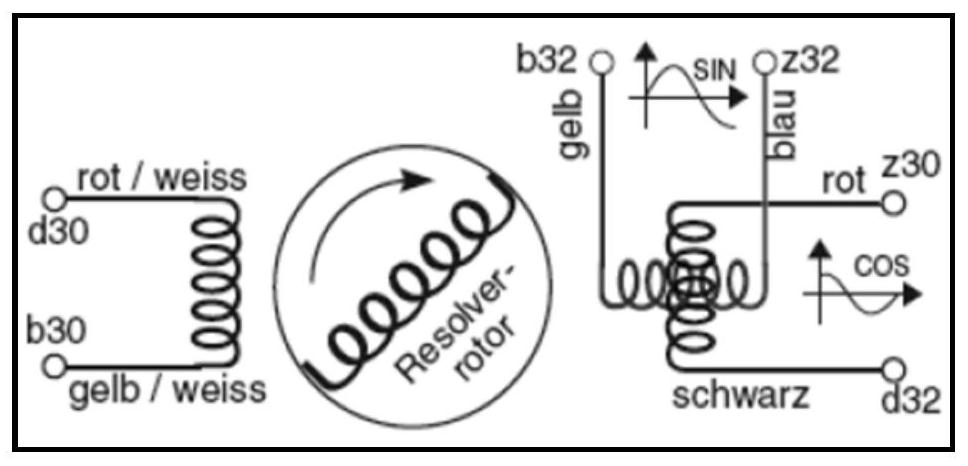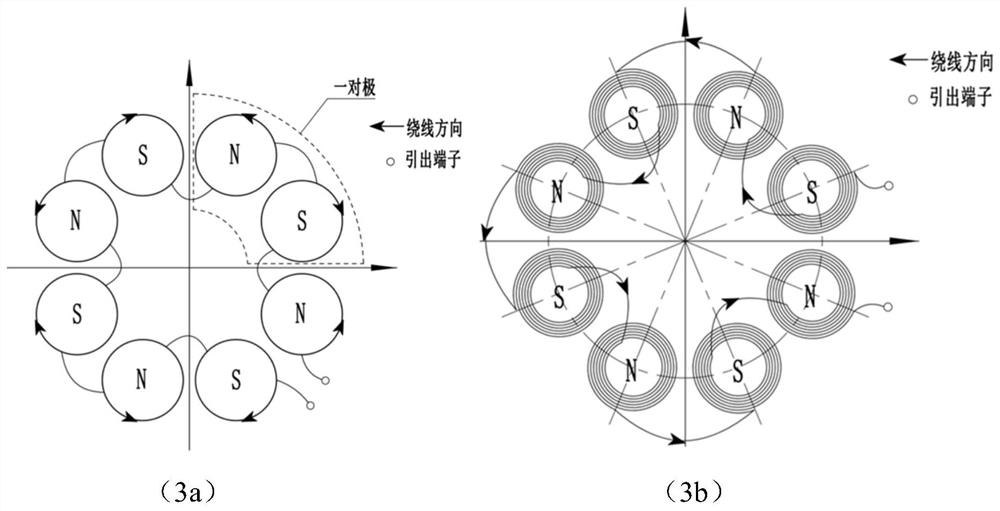A motor rotor position detection device
A technology for motor rotors and detection devices, applied to circuit devices, using electric/magnetic devices to transmit sensing components, electrical components, etc., can solve problems such as difficult structural layout, non-contact power supply methods for modulated rotors, etc., and achieve space The layout is flexible and diverse, the axial structure of the device can be adjusted flexibly, and the effect of strong anti-interference
- Summary
- Abstract
- Description
- Claims
- Application Information
AI Technical Summary
Problems solved by technology
Method used
Image
Examples
Embodiment 1
[0049] This embodiment focuses on how to realize the modulation effect of the rotor position on the mutual inductance.
[0050] The device in this embodiment is a rotor position detection device with 4 pairs of poles.
[0051]The primary and secondary windings are composed of an even number of coils with the same structure. Each coil is evenly distributed along the circumference, and its axis is parallel to the axis of the motor. image 3 (3a) is a schematic diagram of the winding structure of the primary and secondary windings of the four-pair pole detection device described above, wherein each coil is circular, and one primary winding is used to establish the excitation magnetic field, one secondary winding, and the primary , The secondary side is coupled by air and there is no iron core, the primary winding is consolidated with the rotor, and the mutual inductance between the primary side and the secondary side changes approximately sinusoidally with the rotor position unde...
Embodiment 2
[0065] This embodiment focuses on how to set up an excitation circuit on the basis of Embodiment 1 to realize the passive design on the rotor side.
[0066] Figure 7 , 8 The implementation methods of the excitation circuit in the case of quadrature double-winding and single-winding are given respectively.
[0067] The field circuit has a field winding and a relay winding, both with compensation circuits. The function of the excitation circuit is to realize the passive design of the primary winding.
[0068] A schematic diagram of the coil structure (of the excitation winding and the relay winding) conforming to the above expression is as follows: Figure 9 express. The excitation winding and the relay winding of the excitation circuit are composed of a circular coil whose axis is the rotation axis of the motor. The mutual inductance between windings is small enough to be ignored.
[0069] Notice, Figure 9 The coil structure can be used not only as a coil placed on the...
PUM
 Login to View More
Login to View More Abstract
Description
Claims
Application Information
 Login to View More
Login to View More - R&D
- Intellectual Property
- Life Sciences
- Materials
- Tech Scout
- Unparalleled Data Quality
- Higher Quality Content
- 60% Fewer Hallucinations
Browse by: Latest US Patents, China's latest patents, Technical Efficacy Thesaurus, Application Domain, Technology Topic, Popular Technical Reports.
© 2025 PatSnap. All rights reserved.Legal|Privacy policy|Modern Slavery Act Transparency Statement|Sitemap|About US| Contact US: help@patsnap.com



